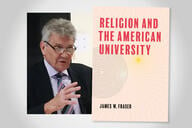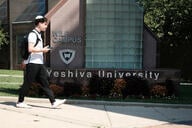You have /5 articles left.
Sign up for a free account or log in.
Arizona State University plans to launch a nonprofit teaching law firm next summer to hire some of its recent graduates and provide on-the-job training – a move the law school’s dean said is motivated by a desire to serve students, not to boost the employment data frequently used in law school rankings.
Plans for the firm – which debuted in the New York Law Journal earlier this month – include about five or six permanent attorneys who will operate the firm through its own nonprofit foundation, said Douglas Sylvester, dean of the university’s Sandra Day O’Connor College of Law, in an interview. The firm will eventually employ between 25 and 35 recent graduates, he said, adding that the firm’s main focus will be to teach and mentor young attorneys in the same way that hospital residency programs train newly minted M.D.s.
Large law firms, public agencies, and other organizations have taken a hit from the faltering economy, and many have cut programs that trained new graduates, Sylvester said. “So what we now see is either the agencies or firms are not willing to hire untrained attorneys because they won’t train them, or they hire them and just immediately throw them into the fire.” He said the teaching firm will pick up some of that slack in training – albeit at a lower salary than a large firm would offer.
“The idea is to have a place for our recent grads to go and spend two to three years getting valuable legal experience in a real law firm,” Sylvester said. “That ensures that they get the kind of soft landing and legal training that will really set them up for the rest of their careers.”
Fred Thrasher, deputy director of the National Association for Law Placement, wrote in an e-mail that programs like this give graduates an edge in a competitive marketplace, "especially in a marketplace where employers are looking for associates who can hit the ground running and provide added value for their clients."
Sylvester said individuals will be hired with the ability to stay on for two years and the option to extend for a third year, but they are allowed to leave at any time if they secure a long-term job: "If after six months you’ve managed to get enough experience and enough networking to walk out the door and begin your long-term career, we think that’s a great opportunity, and we don’t plan on standing in peoples’ way.”
Sylvester said the firm will not cost the university any money. He said he's investigating different sources to help fund startup costs, and he expects the firm to be self-sufficient through its foundation once it is established.
He said the firm differs from post-graduation options at other universities – programs he called "solo practice incubators" which provide graduates with a mentor and real estate space so they can pool resources and work collaboratively -- because it puts graduates in a real law firm environment. "It's not a mentor; it's a boss," he said. "You are working with an experienced attorney at every level in the same way that you would be working with them at any legal practice office in the country."
Not about the rankings
As law graduates have struggled to find jobs to pay off their debt, law schools have also come under fire for providing misleading data about their graduates’ employment.
But Sylvester said plans for the teaching firm were born out of a desire to help graduates find jobs and become better prepared for the workforce, and a positive effect on the U.S. News & World Report rankings would be an effect, not a cause, of creating the new firm. He said he thinks any criticism of the teaching firm as a tool to boost rankings does not consider the impact it has on job-seeking graduates.
“Here’s 15 students that would be unemployed if we did nothing, and we find 10 of them are good fits for the firm,” he said. “I would think that would be a positive thing if you are ranking a law school. That is a far better thing than saying, ‘Thank you for your tuition and goodbye.’ ” Sylvester said he doesn’t let the U.S. News rankings affect any measures the college takes to help employment.
Kyle McEntee, executive director of Law School Transparency, a nonprofit advocacy group, said he thinks Sylvester’s plan for a teaching law firm is “firmly rooted in much more than boosting their employment rate.” He said since Arizona State already runs a fellowship program – which he said many colleges use to help jobless students as well as boost employment rates – it wouldn’t need the teaching firm to further increase its job numbers.
According to data published by Law School Transparency, 201 students graduated from Arizona State's law school in 2011, and 18 of those graduates -- 9 percent -- were employed in school-funded fellowships, which, for Arizona State, are short-term jobs. A majority of the graduates -- 137, or 68.2 percent -- were employed in long-term, full-time, bar-required jobs, which are defined as lasting for one year or longer and at least 35 hours per week. Jobs created by the teaching firm would count in the latter category, McEntee said. According to the data, 15 students, or 7.5 percent, were counted as non-employed.
Sylvester said he hopes the teaching firm would provide employment and training in the legal sector for grads who are having trouble finding a job: "I am very interested in providing a bit more of a soft landing and cushion during these difficult times for grads who clearly deserve jobs."
Struggling to find work
Many universities fund fellowships, which pay graduates a stipend to work for nonprofit organizations or government agencies for a limited period of time. George Washington University’s fellowship program reached the news this week because of an announcement made Tuesday – and rescinded Wednesday following student outrage – that it planned to cut the fellowship's stipend from $15 an hour to $10.
Arizona State’s program, the Public Interest Fellowship Program, pays students struggling to find full-time employment a stipend to cover living expenses while students work with a public interest group or nonprofit organization for 10 to 12 weeks. In 2010, 20 graduates participated in the program, and 18 did so in 2011 – these numbers are both less than the range of 25 to 35 graduates that Sylvester predicted the firm will hire once it is established.
McEntee said he thinks the teaching law firm will replace the university’s fellowship program in its role of placing jobless graduates, but Sylvester still sees value in the fellowship program: “I believe in as many ideas as possible,” he said. “I have no intention of abandoning the Public Interest Fellowship Program that we have.”
The teaching firm will also serve the public interest: Sylvester said its nonprofit structure will provide sufficient income support the work of the attorneys and provide cost-effective legal services in unmet areas of need in the community, which he identified as middle-class individuals and businesses.




